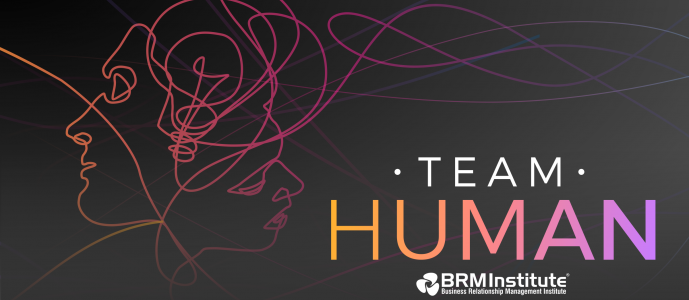Team Human takes on Silos, the Intergenerational Workforce, and Purpose vs. Profit

Recently, BRM Institute played host to a panel of five incredible thought leaders to discuss the effect of organizational structure on the humans within it. Team Human explored how BRMs and thought leaders can serve any organization by seeking to break organizational boundaries and allow it to evolve into a purpose-driven ecosystem.
Bridging Generational Gaps
The focal point of the conversation, moderated by Danielle-Yvonne Dizes, rested heavily on intergenerational workforces and changing preferences in how workflows should best be managed. Panelists all seemed to echo the sentiment that blending the workforce goes beyond bridging generational gaps, but rather the focus must lie on organizational structure itself. While the likely impact of a blended workforce is noteworthy in itself, our guests emphasized its importance further when considering the role advancing technology and automation might have on modern business.
“As we see the exponential growth in digital technologies enter our lives and our places of work, we now have the opportunity to be the true collaborative CREATIVE force we were born to be. This means that we can rediscover how to be HUMAN and truly express our individual and team creativity in meaningful valued work.”
Silos are antiquated and often damaging to innovation, whereas interdisciplinary teams stand to become purpose-driven wonder machines that can keep pace with the ever-changing needs and goals of modern business.
“We have boxed people into their part of the production line, creating layer upon layer of governance and management all focused on industrial productivity and efficiency, in effect stripping back human creativity and replacing purpose with processes and short-term unsustainable profit, which is a far cry from the words of Adam Smith.”
BRMs Orchestrating the Blend
Panelists spoke about the role of the BRM in navigating the blending of an organization on the whole. Additionally, they echoed BRM Philosophy by defining value in broad terms, which includes intangibles, and keeping the focus on purpose and true collaboration – as opposed to just cooperation.
“I think the human element is going to have MASSIVE value, but only if we educate and engineer it to have value. And I think we’re a way off that yet. The value many companies still only have is financial (it’s the natural state of capitalism).”
For larger and more established companies, this level of comprehensive change in organizational structure likely will loom as a daunting or unfavorable eventuality. Specifically, changing long-standing processes to make room for real, functional engagement between entry-level staff, C-suite executives, and everyone in between may seem like a major leap into unknown territory.
As some organizations do, holding onto a strategy of insulating key players of the company firmly in a container warns that those players may be driven by profit margins rather than purpose and values.
Sooner rather than later, the conversations that seek to orchestrate a successful organizational adjustment must be centered around listening to the goals of the individual and connecting them with a team that works towards convergence of those goals. Sounds like a job for a BRM!
Put Purpose Out Front
Team Human dove even deeper, getting specific while tackling the challenging topic of the dynamic between Purpose and Profit in decision-making. The consensus asserted that leaders should be purpose-driven as well as principled. Accordingly, purpose evolves inertia in a positive way (profitability included) if it commences with noticeable adoption at the top levels and continues to be well-communicated throughout the company.
When the purpose of a company extends to the outermost reaches of the organization and remains in convergence with individual goals, the core purpose stands to be strengthened and the individuals will be empowered to dig deep in working towards shared ownership.
Talk It Through
Finally, Team Human again spoke harmoniously about how to approach conversations with the humans that make up an organization in order to build relationships quickly and meaningfully.
It’s as simple as starting a genuine conversation and seeking to understand their personal goals, values, and needs. If you start the conversation, be willing to communicate what you can offer, and be sure to follow through with action.
If you enjoyed this article, learn more about how Emotional Intelligence drives these genuine and necessary conversations.
